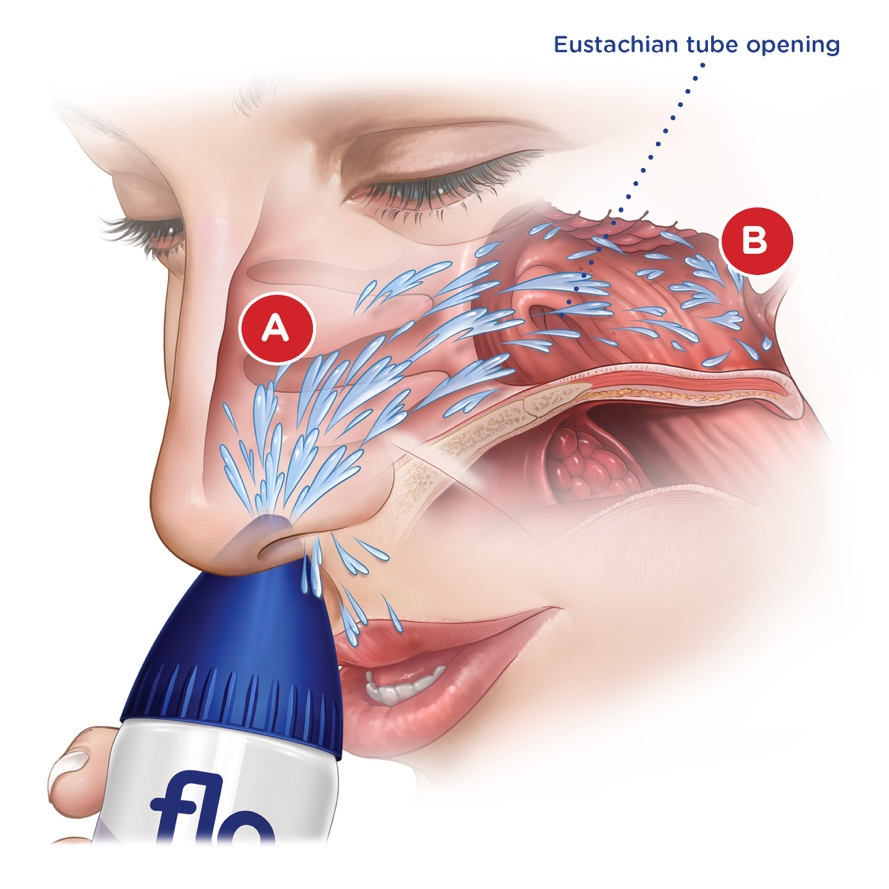Why do children get so many ear infections?
By ENT Technologies (the makers of Flo Nasal Products)
Ear infections in children are commonplace and can range from episodes lasting a few days (mostly due to acute viral infections such as colds) to more chronic forms with the production of glue-like substance which can fill the middle ear cavity and reduce hearing significantly.
Reasons for ear infections in children
There are many reasons why children are susceptible to ear infections including the following more common ones:
The middle ear cavity is drained by a tube known as the Eustachian tube which connects it to the back of the nasal cavity close to the adenoids. This tube tends to lie relatively horizontally in children so that drainage of fluid is not as quick as in adults, who have a more vertically positioned Eustachian tube.
Children often have an enlarged adenoid and this can squeeze and narrow the Eustachian tube opening at the back of the nasal cavity.
The tissue lining of the Eustachian tube is similar to that of the middle ear cavity and also the nasal tissues. When one of these areas becomes inflamed due to a viral infection or an allergy, then the tissues in the other sites become inflamed as well. Tissue swelling in the Eustachian tube causes it to become narrow and to delay or prevent fluid naturally produced in the middle ear cavity from draining out. This in turn can result in pressure build up in the middle ear cavity producing a very painful earache and occasionally, an infection.
Some precautionary steps
A recently published clinical trial1 conducted in children suffering from recurrent middle ear infections showed that those who used a daily large volume nasal wash (irrigation) regularly over the study period had significantly fewer ear infections than those who did not use this therapy.
Since large volume saline washes are able reach the back of the nasal cavity (see B - as depicted in the diagram) they can help to keep the Eustachian tube open by washing away inflamed materials, inhaled viruses, pollens and other allergens or irritants.
If your child appears to suffer with ear infections regularly, talk to your health professional and ask about the regular use of large volume preservative free saline washes as a preventive measure during the cooler months.
Should your child suffer from hay fever consider nasal washing during the season to help reduce pollen loads in the nose and hence improve hay fever symptoms2,3. Washing the nose about 20-30 minutes before applying nasal medicated sprays has been shown to improve the effect of these medicines4.
Will young children and babies tolerate a nasal wash?
A nasal wash is also commonly known as a rinse, irrigation, flush or douche and it’s a common misperception that children will not tolerate a nasal wash5. However, with a little supervision, the large volume wash can be used and is accepted by children as young as five or six years of age. For babies and younger children, a gentle isotonic preservative free nasal saline drop or nasal spray is preferable.
Clinical References:
Toretta S, et al. Supervised Nasal Saline Irrigations in Otitis-Prone Children. Frontiers in Pediatrics. (2019) https://doi.org/10.3389/fped.2019.00218
Minyoung Jung, et al. Beneficial effect of nasal saline irrigation in children with allergic rhinitis and asthma: A randomized clinical trial. Asian Pac J Allergy Immunology (2020) DOI 10.12932/AP-070918-0403.
Head K, Snidvongs K, Glew S, Scadding G, Schilder AG, Philpott C, et al. Saline irrigation for allergic rhinitis. Cochrane Database Syst Rev. 2018;6:CD012597.
Papsin B, McTavish A. Saline nasal irrigation: Its role as an adjunct treatment. Canadian Family Physician. 2003; 49: 168–173.
Gutierrez-Cardona N, Sands P, Roberts G, Lucas JS, Walker W, Salib R, et al. The acceptability and tolerability of nasal douching in children with allergic rhinitis: A systematic review. Int J Pediatr Otorhinolaryngol. 2017; 98:126-35

